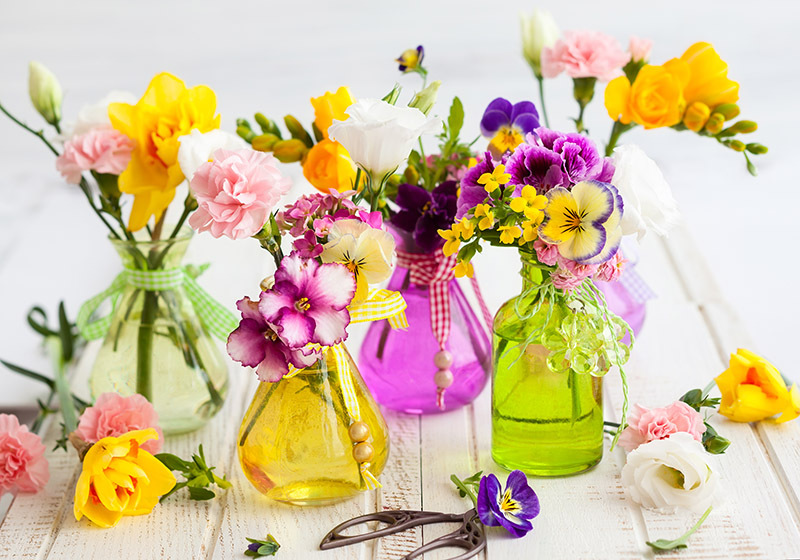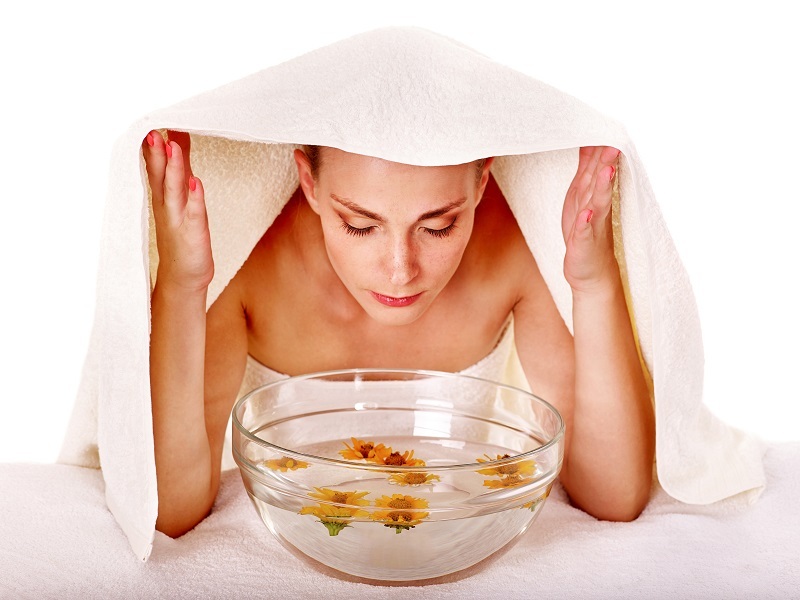Harness the Power of Orchids at Home
Posted on 17/08/2025
Harness the Power of Orchids at Home: Transform Your Living Space
Orchids have enchanted plant lovers and horticulturists for centuries with their breathtaking blooms, intriguing shapes, and delicate fragrances. These remarkable flowers are more than mere decorative pieces--they offer a remarkable range of benefits for home environments. In this comprehensive guide, you'll learn how to harness the power of orchids at home, discover their surprising advantages, and uncover expert tips to grow and care for different orchid varieties.
Why Orchids are Perfect for Home Environments
Orchids hold a special place in both botanical history and modern houseplant culture. With their intricate flowers and adaptable growth habits, orchids for the home provide several compelling reasons to make them a centerpiece of your indoor garden:
- Aesthetic Appeal: Vibrant colors and unique shapes instantly elevate the look of any room.
- Air Purification: Certain orchid species help filter and cleanse the indoor air.
- Mood Enhancement: Their presence boosts creativity, reduces stress, and brings a soothing vibe to your living space.
- Enduring Blooms: With proper care, orchid flowers last for months, offering extended beauty versus other plants.
- Easy Adaptation: Various orchids are well-suited to indoor conditions with minimal maintenance.

The Science-Backed Benefits of Growing Orchids Indoors
Air Quality Improvement
Many popular home orchids, including Phalaenopsis and Dendrobium varieties, are not only lovely to look at--they can actually improve indoor air quality. Research has shown that some orchids absorb VOCs (volatile organic compounds) such as xylene and toluene, which are common indoor air pollutants. Through photosynthesis, orchids release oxygen into the air, making it fresher and healthier.
Stress Reduction
The mere presence of beautiful flowers like orchids has been linked to improved moods, lower stress levels, and enhanced concentration. Caring for orchids in your home can become a mindful, relaxing hobby that brings a sense of accomplishment and peace.
Long-Lasting Blooms & Effortless Color
Unlike most houseplants, orchids can bloom for an impressive length of time--from several weeks up to six months under optimal conditions. This means that you can enjoy their stunning flowers throughout the year, translating to lasting color and style with minimal effort.
Choosing the Right Orchid Species for Home Growing
Not all orchids are created equal. Some thrive in beginner settings, while others demand specialized care. If you're eager to harness the power of orchids at home, start by selecting the perfect species for your space and skill level.
Best Orchid Varieties for Homes
- Phalaenopsis (Moth Orchid): One of the easiest and most popular orchids for beginners. Tolerant of indoor temps and indirect sunlight, these make beautiful tabletop or windowsill plants.
- Dendrobium: With slender canes and sprays of white or purple flowers, Dendrobiums can adapt to a variety of indoor environments.
- Oncidium (Dancing Lady Orchid): Famous for their clustered, fluttery flowers that resemble dancing figures--plus they prefer similar conditions to Phalaenopsis.
- Cattleya: Known for their fragrance and bold colors, but they require a bit more humidity and light.
- Paphiopedilum (Lady's Slipper): Unique pouches and mottled leaves make them a conversation starter in any home.
Orchid Growth Habits: Epiphytic vs. Terrestrial
Orchids grow in two main ways:
- Epiphytic orchids (like Phalaenopsis, Dendrobium, and Cattleya) grow on tree bark in nature and need airy, fast-draining media.
- Terrestrial orchids (such as Paphiopedilum) grow in soil but still prefer loose, well-aerated media to prevent root rot.
Setting Up Your Home for Orchid Success
Light Requirements
Orchids do best with bright, indirect light. Too much direct sun can scorch their leaves; too little will prevent blooming. North or east-facing windows are ideal. If natural light is lacking, consider supplementing with full-spectrum grow lights.
Temperature and Humidity
- Most orchids thrive between 65-80?F (18-27?C) during the day, and just a few degrees cooler at night.
- Humidity should range from 40%-70%. Misting, humidity trays, or even a small humidifier can help.
Best Potting Media for Home Orchids
Regular soil is unsuitable for orchids. Instead, use these options for home-grown orchids:
- Bark chunks: Allow for excellent drainage and air flow.
- Sphagnum moss: Retains moisture for plants needing more water.
- Coconut husk fiber: Long-lasting and moisture-retentive.
High-quality store-bought orchid mixes often blend these materials for healthy root growth.
How to Grow and Care for Orchids at Home
1. Watering Orchids
Water orchids in the morning to allow leaves to dry by night. Never soak--water sparingly when potting medium feels dry an inch below the surface. Overwatering is the most common cause of failure for new growers.
- Tip: Use tepid water and avoid getting water on leaves or in the crown to prevent rot.
2. Fertilizing Orchids
Harnessing the beauty and health benefits of orchids requires feeding. Apply a balanced, water-soluble orchid fertilizer every 2-4 weeks during active growth, reducing in dormant seasons. Many orchids prefer "weakly, weekly" feedings--dilute fertilizer to half strength and use more frequently.
3. Repotting Orchids
Repot orchids every 1-2 years as their potting medium breaks down. Choose a pot only slightly larger than the previous one to avoid water retention and root rot. Repot after flowering, when new growth emerges.
4. Pruning and Cleaning
Once blooms fade, prune flower spikes just above a visible node to encourage reblooming, if the type allows. Wipe leaves periodically with a soft, damp cloth to remove dust and keep the plant photosynthesizing efficiently.
5. Pest and Disease Management
Home orchids can occasionally be susceptible to pests such as scale, mealybugs, and spider mites.
- Inspect regularly for sticky residue, white cottony clumps, or yellowing leaves.
- Treat outbreaks with insecticidal soap, neem oil, or by wiping leaves with a solution of water and mild dish soap.
- Quarantine new plants for a few weeks to ensure no pests are transferred to your healthy collection.
Creative Ways to Harness the Power of Orchids at Home
Orchids as Living Art
Use beautifully potted homemade orchid arrangements as living centerpieces, add them to bookshelves or windowsills, or mount epiphytic orchids on driftwood for a striking wall display. Their sculptural forms and bold colors can amplify any interior design style--from minimalist to art deco.
Orchids in Feng Shui
Orchids are beloved in Feng Shui for their association with balance, fertility, and positive energy. Place orchids in living rooms or studies to encourage creativity and harmony, or in bedrooms for a calming, gentle energy that supports relaxation and intimacy.
DIY Orchid Displays and Terrariums
- Glass terrariums: Create mini orchid gardens with moss, bark, and decorative stones for desk or tabletop beauty.
- Hanging baskets: Display trailing orchids for a dreamy, floating bouquet effect.
- Mounted orchids: Attach epiphytic orchids to bark or cork for a tropical look that mimics their wild habitat.
Troubleshooting Common Home Orchid Problems
- No Blooms: Insufficient light is the main reason orchids won't bloom at home. Try moving your plant to a brighter spot, but avoid scorch.
- Yellow Leaves: Overwatering, low humidity, or sudden temperature changes can cause yellowing.
- Buds Dropping: Sudden drafts, moving the plant, or inconsistent watering stress the orchid, leading to bud drop.
- Root Rot: Always use well-draining orchid mix and let roots dry slightly between waterings.
- Pest Infestations: Isolate affected plants and treat promptly with biologically safe controls.

Orchids for a Greener, Healthier Home
Harnessing the versatility, freshness, and tranquility of orchids in your living space goes beyond mere decoration. Orchids can truly transform your home environment, purifying the air, soothing your mind, and infusing lasting color and elegance to any room. Best of all, today's extensive range of orchid hybrids ensures there's an ideal variety for everyone--from novice to expert grower.
Pro Tips for Maximizing the Benefits of Orchids at Home
- Group orchids together: Creating a cluster holds humidity and increases visual impact.
- Rotate plants weekly: Promotes even light exposure and symmetrical growth.
- Choose pots with drainage holes: Prevents water buildup and root rot.
- Monitor humidity levels: Use a hygrometer to ensure an optimal range, especially in winter.
- Experiment with placement: Try orchids in bathrooms where natural humidity supports healthy growth.
The Final Bloom: Embrace the Power of Orchids in Your Home
With their unrivaled beauty, air-purification qualities, and soothing presence, orchids are among the most rewarding and versatile plants you can welcome into your home. By selecting the right varieties, providing excellent care, and using creative display techniques, you can truly harness the power of orchids at home--beautifying your space and uplifting your daily life. Start your orchid journey today and watch both your home and well-being blossom!
Latest Posts
7 Unexpected Facts About Tulips to Explore
Long-Lasting Poinsettias: From Bloom to Thriving
Harness the Power of Orchids at Home







